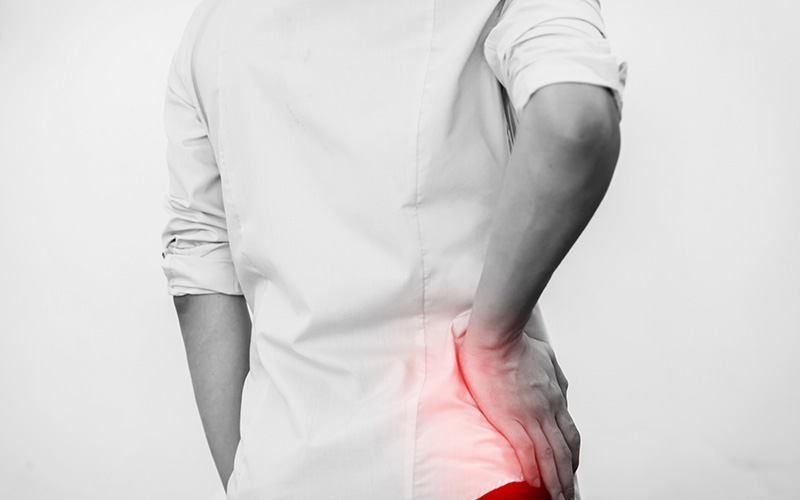
A common concern of patients coming to outpatient physical therapy is whether the condition they are receiving treatment for will require surgery. Patients presenting with lateral hip pain, or pain located at the outer portion of the hip, are often concerned whether arthritis is causing their pain, and worry that they may require a total hip replacement. The good news is that lateral hip pain is usually not a result of arthritis, but more likely a condition involving the soft tissues of the lateral hip.
Previously, pain at the lateral hip was usually diagnosed as Trochanteric bursitis, involving inflammation of the bursal tissue overlying the bony prominence known as the greater trochanter. More recent imaging and research has shown that the majority of individuals with lateral hip pain actually do not have inflammation of the bursa, but demonstrate involvement of the lateral hip muscles and tendons, known as the gluteus medius and minimus. A more recent and accurate description of pain experienced at the lateral hip is known as Greater Trochanteric Pain Syndrome (GTPS).
The occurrence of GTPS in the general population is relatively common, especially in women over the age of 50. The incidence of lateral hip pain is also very high in those experiencing low back pain (up to 25%). There is some question of whether low back pain causes lateral hip pain, or vice versa. Clinical experience has demonstrated that in many patients, treatment of the lateral hip condition frequently results in decreased low back pain.
Greater Trochanteric Pain Syndrome (GTPS) is typically diagnosed during the clinical exam, with significant clinical findings including gait deviations (lateral hip drop or excessive lateral trunk lean), pain with palpation of the lateral hip muscle, tendon or bursa, and pain and weakness with strength testing of the lateral hip muscles. Imaging techniques, such as MRI and ultrasound can be beneficial in diagnosis but are frequently not necessary.
Successful treatment of patients with GTPS is best achieved through a multi-faceted approach. Manual techniques, including Active Release Technique (ART) and Graston Technique can be very effective in increasing circulation and soft tissue mobility. Flexibility and stretching techniques directed at stiff, tight tissues around the hip and pelvis is beneficial, and guided strengthening activities are critical in addressing weakness of the hip and core musculature.
A thorough evaluation and implementation of well-crafted treatment plan frequently results in an excellent outcome for those experiencing GTPS. If lateral hip pain is affecting your ability to work, play and enjoy physical activity, consult with your ProActive physical therapist to get back on track!

